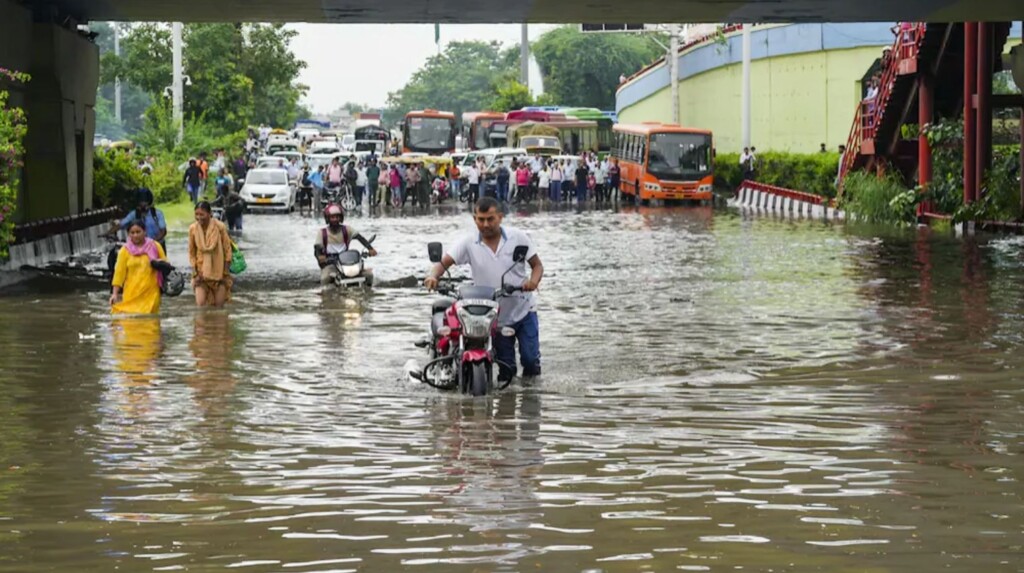With heavy rainfall predicted, the India Meteorological Department (IMD) issued a “yellow” signal for Delhi-NCR on Friday.
On Friday morning, September 13, intense rain continued to batter Delhi and the nearby National Capital Region (NCR), resulting in waterlogging and traffic jams in many areas of the city. Numerous images circulating on social media depicted flooded roads close to ITO, the Sangam Vihar locality, and Kalkaji, among other locations.
The Delhi traffic police issued recommendations for commuters, advising them to plan their routes accordingly due to the problems with waterlogging causing traffic. The Guru Teg Bahadur Road had waterlogging, according to the police, affecting traffic on both carriageways from Ring Road until Patel Chest in front of Khalsa College and on GTK Road on both carriageways from Mukarba Chowk towards Azadpur Chowk and vice versa.
“There are potholes and waterlogging on Rohtak Road, which affects traffic from Nangloi towards the Tikri Border and vice versa; there is overflow of sewer water near Paras Chowk on Lala Lajpat Rai Marg, which affects traffic from Kalkaji towards Defence Colony,” the Delhi traffic police wrote in their advisory. “Traffic is affected on Main Outer Ring Road in the carriageway from Bhera Enclave Roundabout towards Peeragarhi due to water logging and sewer water overflow near Nagin Lake Apptt, Peeragarhi.”
It further stated that water logging and sewer water overflow at Y Block Bus Stand Mangolpuri had caused traffic disruptions on the major major Kanjhawla Road, the carriageway from Budh Vihar towards Pathar Market Outer Ring Road.
IMD issues ‘yellow’ alert
The India Meteorological Department (IMD) forecasted significant rainfall in Delhi-NCR on Friday and issued a “yellow” advisory.
“Very heavy to very heavy rain, with isolated areas of extremely heavy rain across west Uttar Pradesh.” In certain areas in Haryana, Chandigarh, east Uttar Pradesh, and east Rajasthan, there has been heavy to extremely heavy rain. In parts over Delhi and Himachal Pradesh, there has been heavy rain. In its bulletin, the IMD stated, “Thunderstorm/Lightning at isolated places over north-west India, except Haryana.”
The national capital’s intense downpour, according to the weather service, is the result of a depression that is approaching the area and will eventually weaken into a low-pressure system by Friday afternoon.
The maximum temperature in Delhi-NCR on Thursday was 27.9 degrees Celsius, which is six degrees below usual due to the torrential rains that fell during the day.
The most annual rainfall in Delhi since 2021
Delhi has so far gotten 1,005.7 mm of yearly rainfall, the most since 2021, when it had 1526.8 mm of rain, according to meteorological officials. 1933 saw the highest point of 1534.5mm.
Meanwhile, between 8:30 p.m. on Thursday and 5:30 a.m. on Friday, the Safdarjung meteorological station, which is indicative of the weather in Delhi, reported 25.8 mm of rainfall. Up to 5:30 am on Friday, the total amount of rain recorded at Safdarjung this month was 123.6 mm, which is marginally more than the long-term monthly average of 123.4 mm.
